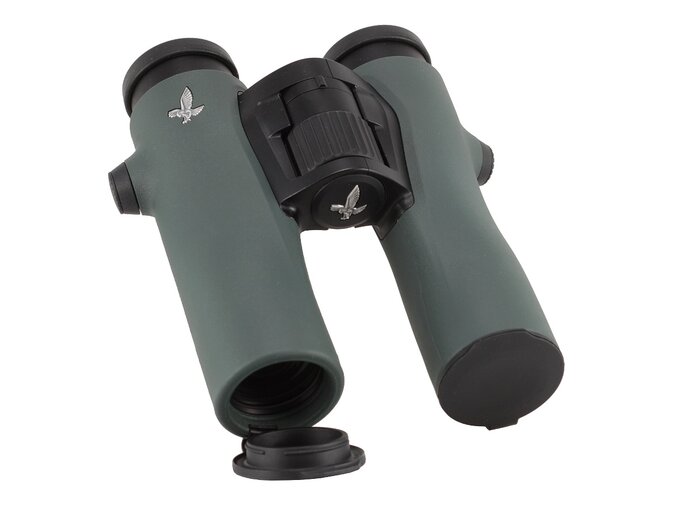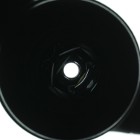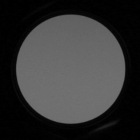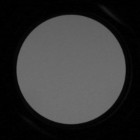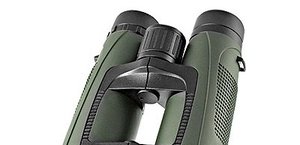Swarovski NL Pure 8x32
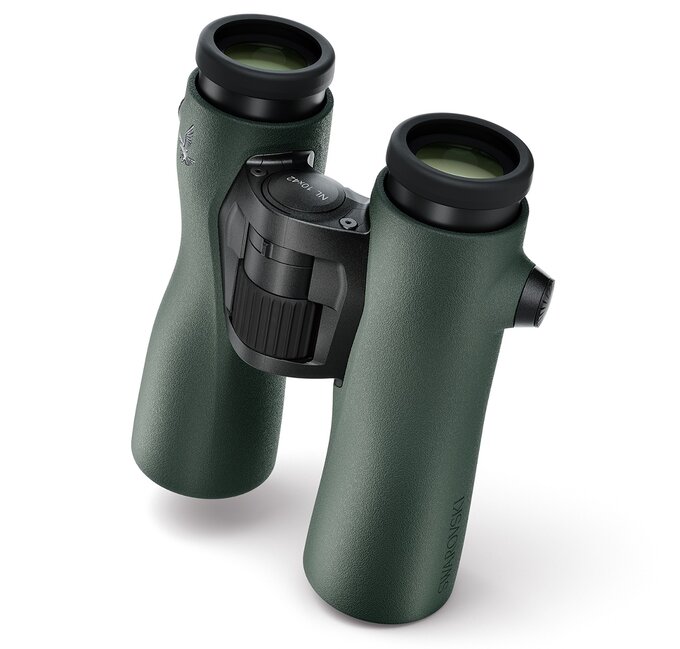 Swarovski NL Pure 10x42 binoculars. |
Fields of view of the new binoculars are the second, very interesting thing. The 8x42 model features a field of view as wide as 9.1 degrees, the 10x42 instrument's field of view is 7.6 degrees and the 12x42 binoculars feature a field as wide as 6.5 degrees. Construction of such wide angle eyepieces that, additionally, are supposed to correct properly optical aberrations up to the very edge of the field and assure you a comfortable eye relief, amounting to 18 mm, needs without doubt a complex optical system. Despite that complexity Swarovski claimed that the overall transmission of their new binoculars reaches a very high level of 91%. Our later tests confirmed that declaration of the producer.
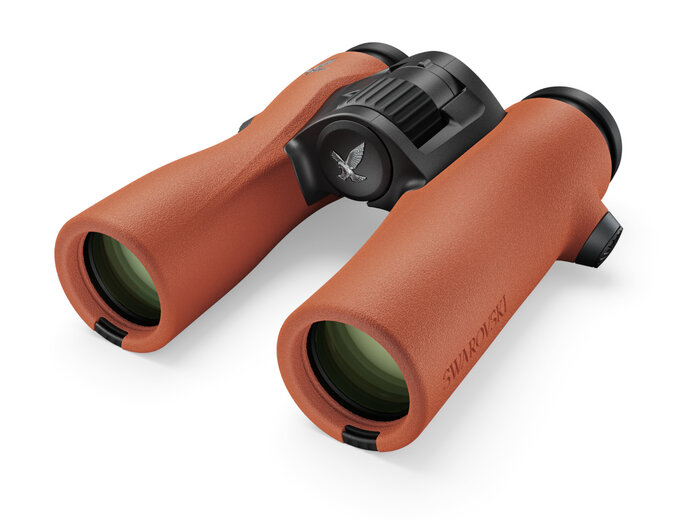 Swarovski NL Pure 10x32 binoculars in orange version. |
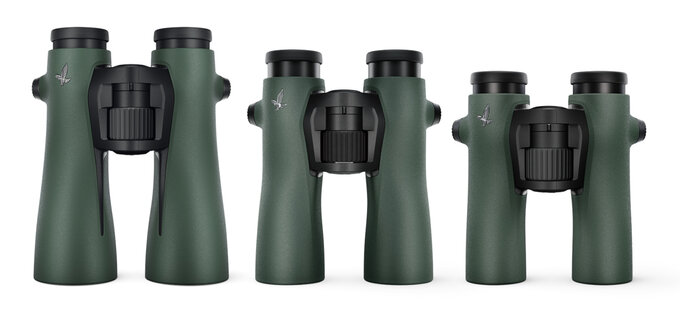 NL Pure bunoculars lineup. |
It's worth adding that you don't deal here with small, lightweight instruments. The weight of the 32 mm NL Pure reaches as much as 640 grams – you can find many 42 mm class binoculars on the market with a similar weight. For those who like small, handy, and light Swarovski models there is the very well-put-together and noticeably cheaper CL Companion series.
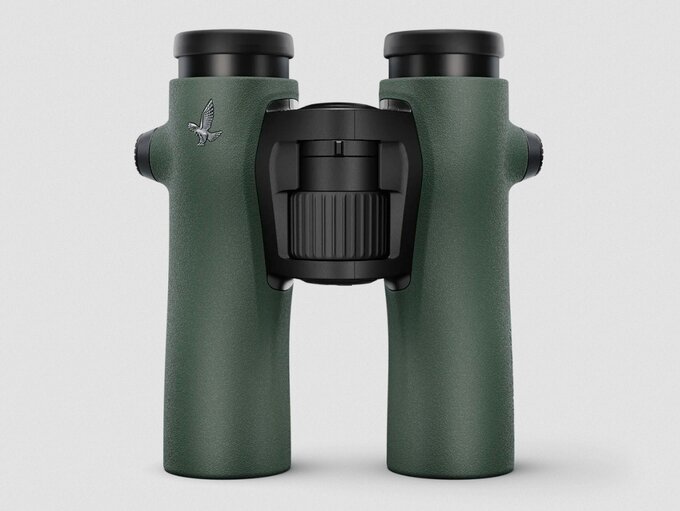 |
Buyers get in the box: caps for objectives and a rainguard, a strap, a very stylish case with a separate strap, a brush, soap and a cleaning cloth. The product comes with a 10-year warranty period of the producer.
| Magnification | Lens diameter | Angular field of view | Prisms | Eye relief | Weight | Price |
|---|---|---|---|---|---|---|
| 8 | 32 | 150/1000(8.5o) | BaK-4/roof | 18 mm | 640 g | 10600 PLN |
Summary
Pros:
- solid and stylish casing,
- wide field of view,
- good transmission, in accordance with official declarations,
- very good colour rendering,
- sharp images practically across the whole field of view,
- sensationally corrected astigmatism,
- slight chromatic aberration,
- very low distortion,
- low coma on the edge of the field of view,
- sensible blackening and cleanliness inside the tubes,
- coatings of excellent quality,
- negligible brightness loss on the edge of the field of view,
- high quality prisms made of BaK-4 glass.
Cons:
- price?
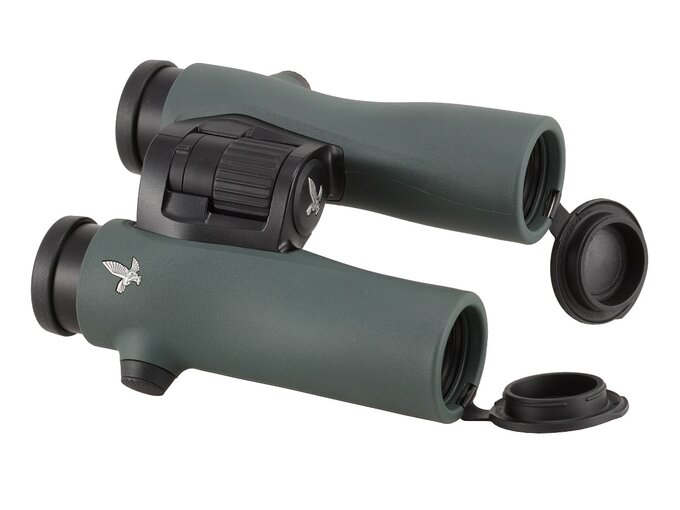 |
Currently a field of 8.5 deg in 8x32 binoculars is wide but certainly not record-breaking. The NL Pure 8x32 has to compete with such rivals as the Zeiss Victory SF 8x32 or the Nikon 8x30 EII, with fields as large as 8.8 deg. Even the Kowa BDII32-8XD 8x32, a pair of binos that is also cheaper, lighter, and handier, is able to offer you a field wider than the Swarovski, as you can notice by consulting the following chart.
The decision of the Swarovski is so surprising because in case of the 10x32 model they managed to introduce a truly record-breaking field, reaching as much as 7.5 deg, wider than the field of the Zeiss Victory, 7.4 degrees, exactly 7 degrees of the Nikon 10x35 EII, and 6.7 deg. Of the Kowa BDII32-10XD 10x32.
Such a lack of a record-breaking field in the 8x32 class is not caused by limitations concerning the weight and dimensions because the NL Pure 8x32 belongs to one of the biggest and heaviest binoculars of this class. Our measurements show the weight (with caps attached to the eyepieces) of 672 grams and the length reaches 144 mm. Many 8x42 binoculars boast similar physical dimensions – it's enough you glance at the photo below here the tested NL Pure 8x32 is positioned next to the Vortex Razor HD 8x42.
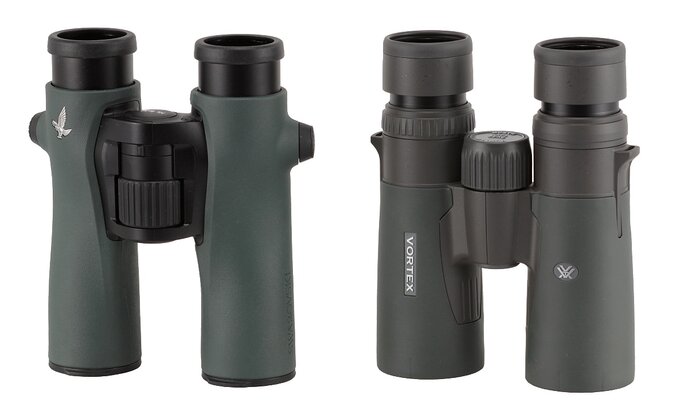 Swarovski NL Pure 8x32 and Vortex Razor HD 8x42. |
Swarovski binoculars have been known for their excellent colour rendering. They owe it to the best and newest types of glass, and excellent antireflection coatings that cover all air-to-glass surfaces.
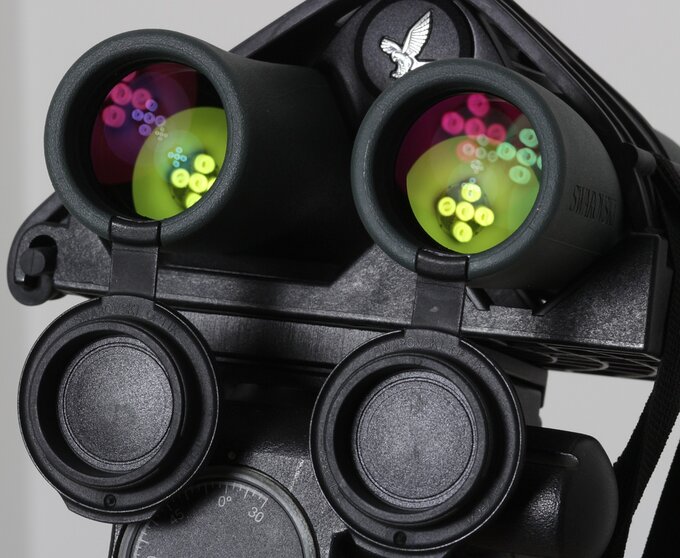 |
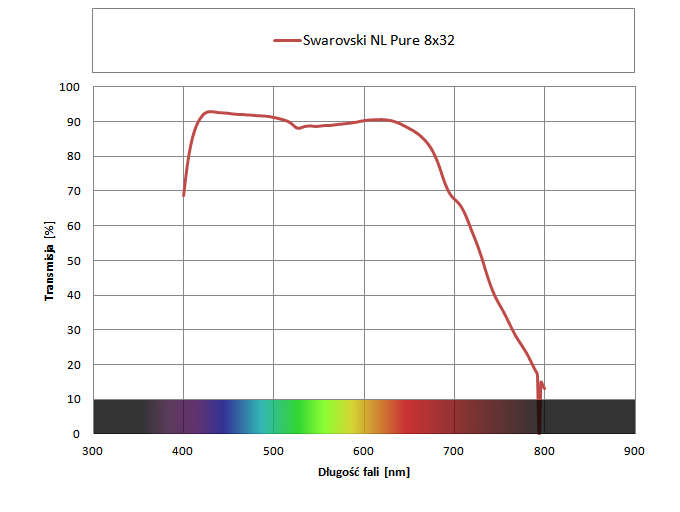 |
I have to admit such an approach is a surprise for me. You can understand it up to a point because the sensitivity of our organ of vision is the biggest for green-yellow light and then decreases quite quickly as you move towards ultraviolet. Such a construction of the transmission curve compensates such an effect so images provided by the NL Pure 8x32 seem to be cristal clear and white in the majority of cases. Still the slight surplus of blue-purple light might make itself felt in a moment when you observe something under cloudless sky that shines blue, due to Rayleigh scattering that accounts for the colour of the sky. In such conditions images provided by NL Pure might seem a tad too cold. Still you have to be aware of the fact that we talk here about colour nuances that, additionally, are influenced by individual vision. Overall brightness, clarity, and colouring provided by the tested pair of binoculars are on a very high level.
The final result of the NL Pure 8x32 in our test is so high that it managed to get the first place of our ranking. It defeated the Zeiss Victory SF 8x32 but only by a hair's breadth; taking into account all the measuring errors the results of both binoculars should be considered identical. They are really worth each other – the Zeiss is able to offer a better field of view and a bit different transmission curve, something that will be appreciated by users who prefer their images a bit warmer.
Overall, we, the customers, should be pleased that the biggest players on the market are able to compete on such a high quality level. If only that competition was reflected also in prices, and such pairs of binoculars could be bought for less than 2000 USD... I wish you and myself that exactly.




